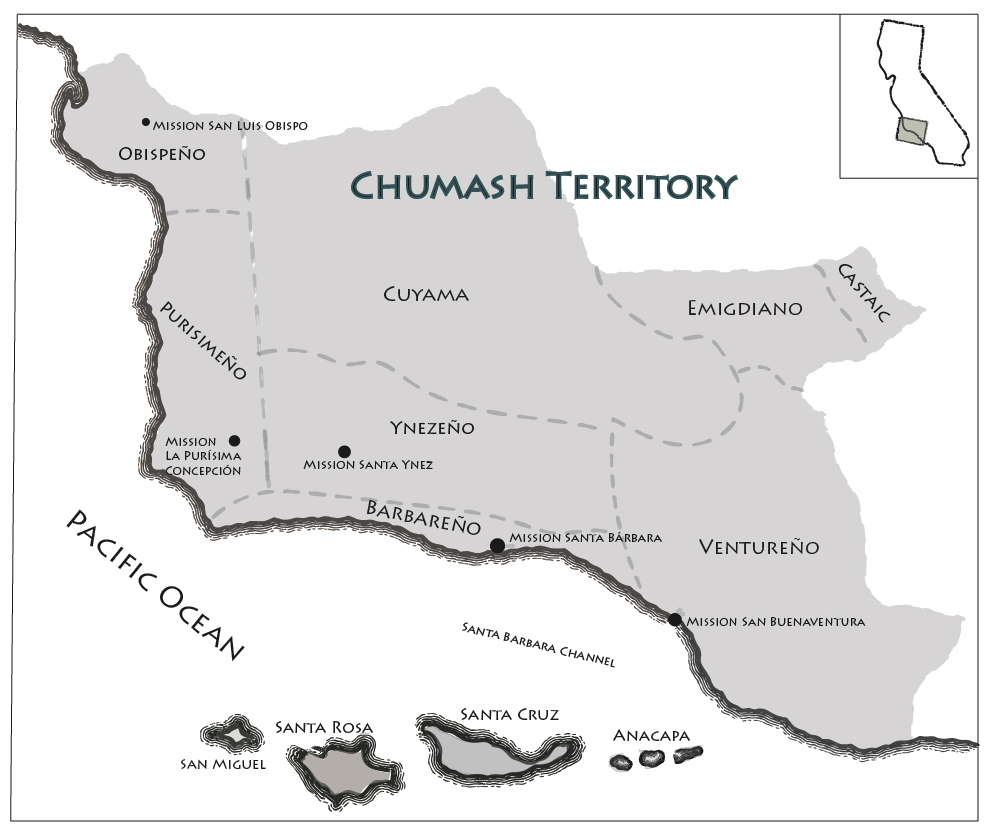
Unveiling Limuw: A Journey to Santa Cruz Island, Heart of Chumash Heritage
Step onto the shores of Santa Cruz Island, and you don’t just enter a national park; you step into a living testament to ancient California, a place known to its first inhabitants as Limuw, "in the sea." This isn’t merely a destination for hikers and kayakers; it’s a profound journey into the very heart of Chumash historical territory, offering an unparalleled blend of raw natural beauty, thrilling adventure, and a deep, resonant connection to one of North America’s most sophisticated indigenous cultures. For the discerning traveler seeking more than just a scenic vista, Limuw promises an immersive experience that echoes with the whispers of a maritime civilization spanning millennia.
Santa Cruz Island, the largest of the Channel Islands, lies just off the coast of Ventura, California, yet feels a world away. Its rugged cliffs, deep canyons, pristine beaches, and towering peaks tell a story written by wind, waves, and time. But beneath this dramatic landscape lies an even older narrative: that of the Chumash people, who thrived here for over 10,000 years. Their intricate understanding of the ocean, their masterful craftsmanship of the tomol (plank canoe), and their complex social and spiritual structures made Limuw a vibrant hub of culture and trade long before European arrival. To truly appreciate Santa Cruz Island is to recognize it as the ancestral homeland of the Island Chumash, a place where their legacy is not just preserved in museums, but is palpable in the very air, the ocean spray, and the enduring wildness of the land.
The Chumash connection is not an academic footnote here; it is the island’s beating heart. The archaeological record of Santa Cruz Island is astonishing, revealing evidence of permanent villages, intricate trade networks extending to the mainland, and a deep spiritual reverence for their environment. The islanders were renowned artisans, particularly in crafting shell beads that served as currency throughout Southern California. Their tomols were marvels of engineering, allowing them to navigate the often-treacherous channel waters, facilitating trade and communication with mainland communities. While no permanent Chumash villages exist today, and the island was tragically depopulated by the early 19th century due to disease and forced removal by missionaries, the spirit of Limuw persists. As you hike its trails or paddle its waters, you are treading paths once walked, sailed, and revered by these skilled mariners and resourceful people. Interpretive signs within the Scorpion Canyon area provide crucial context, bridging the gap between the ancient past and the present-day visitor, reminding us that we are guests on sacred ground.

Beyond its profound historical significance, Santa Cruz Island is an ecological marvel. Its isolation has fostered the evolution of unique species, most famously the island fox, a charming endemic subspecies found nowhere else on Earth. These curious creatures, often seen boldly approaching hikers, are a testament to the island’s distinct evolutionary path. The landscape itself is a tapestry of diverse ecosystems. The eastern end, accessible to most visitors, boasts dramatic sea caves – including the renowned Painted Cave, one of the largest and deepest sea caves in the world, a kaleidoscope of colors painted by algae and mineral deposits. Towering cliffs plunge into the cerulean Pacific, while sheltered coves offer tranquil havens for marine life. Further inland, the island’s central valley, a vast expanse of rolling hills and oak woodlands, stands in stark contrast to the rugged coast, offering panoramic views that stretch to the distant mainland on clear days. Seasonal wildflowers burst forth in spring, transforming the hillsides into vibrant canvases, while the scent of coastal sagebrush perfumes the air year-round.
For the adventurous traveler, Santa Cruz Island is an outdoor playground of epic proportions. Hiking is perhaps the most accessible and rewarding activity. The Scorpion Canyon Loop, a relatively easy two-mile trail, offers stunning coastal views and leads to Potato Harbor, a breathtaking crescent-shaped cove perfect for photography. For more challenging treks, trails like the Scorpion Canyon to Smugglers Cove trail (7.5 miles roundtrip) wind through varied terrain, offering incredible vistas, glimpses of island wildlife, and a true sense of wilderness. Each step on these trails feels like a journey through time, connecting you to the island’s ancient inhabitants who navigated this very landscape.
Kayaking and stand-up paddleboarding are arguably the most iconic ways to experience Santa Cruz Island. Launching from Scorpion Beach, paddlers can explore a labyrinth of sea caves and coves. Guided tours are highly recommended, especially for those new to ocean kayaking, as they provide equipment, safety briefings, and invaluable insights into the island’s geology and history. Exploring Painted Cave by kayak is an unforgettable experience, the sheer scale and vibrant hues of the cave walls creating an almost otherworldly atmosphere. The clear, calm waters within the coves also make for excellent snorkeling and diving, revealing vibrant kelp forests teeming with garibaldi, kelp bass, and other colorful marine life.
For those wishing to extend their stay and fully immerse themselves, camping at Scorpion Canyon Campground is an essential experience. This well-maintained, primitive campground offers picnic tables, food storage boxes (critical for keeping island foxes and other wildlife from your provisions), and pit toilets. There are no showers or potable water beyond the visitor center, emphasizing the island’s wild nature. Spending a night under the star-studded Channel Islands sky, far from city lights and sounds, is a powerful reminder of the island’s pristine beauty and the deep connection the Chumash must have felt to this sacred place. The sounds of the ocean, the rustle of the wind, and the occasional hoot of an owl create an auditory landscape that transports you to a simpler, more profound existence.

Planning your visit to Limuw requires a bit of foresight. Access to Santa Cruz Island is primarily via ferry service provided by Island Packers from Ventura or Oxnard Harbors. Reservations are essential, especially during peak season, and should be made well in advance. The ferry ride itself is part of the adventure, often offering sightings of dolphins, seals, and even whales. Upon arrival, remember that Santa Cruz Island is a true wilderness experience. There are no shops, restaurants, or services beyond a small visitor center and basic restroom facilities at Scorpion Anchorage. Visitors must bring all their own food, water (at least 1 gallon per person per day is recommended), and supplies. Layers of clothing are crucial, as weather conditions can change rapidly. Sturdy hiking shoes, sun protection, and a keen sense of adventure are non-negotiable. Most importantly, embrace the "Leave No Trace" principles: pack out everything you pack in, stay on marked trails, and respect the wildlife and the fragile ecosystem.
The true magic of Santa Cruz Island lies in its ability to transport you. It’s a place where the air feels cleaner, the silence is deeper, and the connection to both nature and history is more profound. As you stand on a windswept bluff, gazing out at the endless Pacific, you can almost hear the rhythmic strokes of tomol paddles, envision ancient Chumash villages nestled in the canyons, and feel the enduring spirit of Limuw. It’s an opportunity not just to witness beauty, but to feel the pulse of a land that has been cherished and inhabited for millennia.
In an increasingly crowded world, Santa Cruz Island offers a rare sanctuary – a place of wild beauty, thrilling adventure, and profound historical resonance. It is more than just a dot on the map; it is Limuw, the enduring heart of Chumash territory, inviting you to explore, reflect, and connect with a past that continues to shape its breathtaking present. For the traveler yearning for an experience that transcends the ordinary, a journey to Santa Cruz Island is not just recommended, it is essential. Go, and discover the timeless magic of Limuw for yourself.


